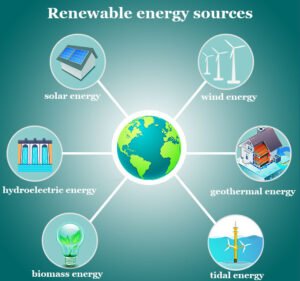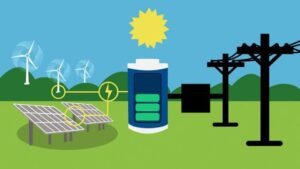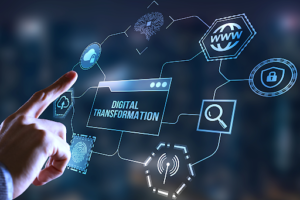Introduction to Car Technology
The automotive industry has undergone a remarkable transformation over the past few decades, evolving from producing basic, utilitarian vehicles to crafting sophisticated, intelligent machines. Today, technology plays a pivotal role in shaping the design, functionality, and performance of modern cars. The infusion of cutting-edge advancements has not only enhanced the driving experience but also significantly improved safety, efficiency, and connectivity.
Gone are the days when cars were merely mechanical devices meant for transportation. Modern vehicles are integrated with a plethora of technologies that make driving more enjoyable and less stressful. From advanced driver-assistance systems (ADAS) that enhance safety to infotainment systems that keep passengers entertained, the scope of automotive technology is vast and ever-expanding.
One of the most notable impacts of technological advancements in cars is the enhancement of safety features. Technologies such as automatic emergency braking, adaptive cruise control, and lane-keeping assistance have revolutionized road safety, reducing accidents and saving lives. These systems rely on a combination of sensors, cameras, and artificial intelligence to monitor the vehicle’s surroundings and assist the driver in making safer decisions.
Moreover, the advent of electric and hybrid vehicles has marked a significant shift towards sustainable transportation. The integration of advanced battery technologies and efficient power management systems has made these vehicles more viable and appealing to a broader audience. This shift not only reduces the environmental impact of transportation but also paves the way for a future where renewable energy sources power our journeys.
In addition to safety and sustainability, connectivity has become a cornerstone of modern car technology. With the rise of the Internet of Things (IoT), vehicles are increasingly connected to the digital world, enabling features such as real-time navigation, remote diagnostics, and seamless integration with smart devices. This connectivity enhances the convenience and functionality of modern vehicles, making them an integral part of our connected lifestyles.
As we delve deeper into the various technological aspects in subsequent sections, it will become evident how these advancements are shaping the future of the automotive industry. The journey from simple transportation devices to intelligent machines is a testament to the relentless innovation and progress within the automotive sector.
Advanced Driver Assistance Systems (ADAS)
Advanced Driver Assistance Systems (ADAS) represent a significant leap forward in automotive technology, offering enhanced safety and convenience for drivers. These systems utilize a combination of sensors, cameras, radar, and sophisticated algorithms to monitor the vehicle’s surroundings and assist the driver in various scenarios, thereby reducing the likelihood of accidents and improving the overall driving experience.
One of the key features of ADAS is adaptive cruise control. This system automatically adjusts the vehicle’s speed to maintain a safe following distance from the car ahead, ensuring smooth and consistent traffic flow. By continuously monitoring the road and responding to changes in traffic conditions, adaptive cruise control minimizes the need for manual acceleration and braking, thereby reducing driver fatigue during long journeys.
Lane-keeping assistance is another crucial component of ADAS. This feature uses cameras to track lane markings and gently steers the vehicle back into its lane if it begins to drift. By providing subtle steering inputs, lane-keeping assistance helps prevent unintentional lane departures, which are a common cause of road accidents.
Automatic emergency braking is a lifesaving technology that detects imminent collisions and applies the brakes if the driver fails to respond in time. This system can significantly reduce the severity of collisions or even prevent them altogether, particularly in scenarios involving sudden stops or unexpected obstacles.
Blind-spot detection enhances situational awareness by alerting the driver to vehicles or objects in their blind spots. This feature typically uses radar sensors to monitor areas that are not visible in rearview mirrors, providing visual or auditory warnings to help the driver make safer lane changes.
Several modern cars have successfully integrated these ADAS features. For example, the Tesla Model S, Mercedes-Benz S-Class, and BMW 5 Series are equipped with comprehensive ADAS packages that include adaptive cruise control, lane-keeping assistance, automatic emergency braking, and blind-spot detection. These advancements in automotive technology not only contribute to safer driving but also pave the way for the future of autonomous vehicles.
Electric and Hybrid Vehicles
The rise of electric and hybrid vehicles represents a significant shift in the automotive industry, driven by advancements in technology and increasing environmental awareness. At the heart of these vehicles lie electric motors and sophisticated battery systems, which are the cornerstone of their operation. Electric vehicles (EVs) are powered exclusively by electricity stored in batteries, while hybrid vehicles combine an internal combustion engine with an electric motor, offering the best of both worlds.
One of the primary benefits of electric and hybrid vehicles is the reduction in emissions. By relying on electricity or a combination of electricity and fuel, these vehicles produce significantly less greenhouse gases compared to traditional petrol or diesel engines. This makes them a vital part of the global strategy to combat climate change and reduce air pollution.
Fuel savings are another significant advantage. Electric vehicles are considerably more efficient than their internal combustion counterparts. They convert a higher percentage of the energy from the batteries to power the vehicle, resulting in lower operating costs. Hybrid vehicles, on the other hand, optimize fuel usage by switching between the electric motor and the engine, depending on driving conditions, which can lead to substantial fuel savings over time.
Several leading models in the market exemplify these benefits. Notable electric vehicles include the Tesla Model 3, renowned for its impressive range and advanced autonomous features, and the Nissan Leaf, which is celebrated for its affordability and reliability. In the hybrid category, the Toyota Prius remains a pioneer, offering exceptional fuel efficiency and a proven track record.
However, the transition to electric vehicles is not without challenges. The current infrastructure for charging stations is inadequate in many regions, limiting the convenience of owning an EV. Additionally, the initial cost of electric and hybrid vehicles can be higher than traditional vehicles, although this gap is closing as technology advances and production scales up. The future of electric vehicles looks promising, with ongoing research focused on improving battery technology, extending vehicle range, and reducing costs.
Autonomous Driving Technology
Autonomous driving technology represents one of the most groundbreaking advancements in the automotive industry. This technology is typically categorized into five levels of autonomy, ranging from Level 0, where the driver has full control, to Level 5, where the vehicle is entirely self-driving without any human intervention. Currently, most commercially available vehicles operate at Levels 2 or 3, which involve partial automation where the driver must remain engaged.
Several key players are driving innovation in this field, including Tesla, Waymo, and traditional automakers like Ford and General Motors. These companies are focusing on integrating advanced technological components to enable self-driving capabilities. Critical among these components are sensors, cameras, and artificial intelligence (AI). Sensors, such as LiDAR and radar, are essential for detecting obstacles and mapping surroundings. Cameras provide visual data that AI processes to understand the environment in real-time. AI algorithms then make decisions based on this data to navigate and control the vehicle.
However, the development and deployment of autonomous vehicles are not without challenges. Regulatory frameworks vary significantly across different regions, creating a complex landscape for manufacturers. While some countries are more receptive and have enacted supportive legislation, others remain cautious, prioritizing safety and ethical considerations over rapid deployment. This disparity necessitates a careful balance between innovation and regulation.
Ethical considerations also play a crucial role in the evolution of autonomous driving technology. Questions about liability in the event of accidents, the ethical programming of AI decision-making in critical situations, and the broader societal impact of job displacement are hotly debated topics. As the technology progresses, these issues will require comprehensive solutions to ensure that autonomous vehicles can be safely and ethically integrated into society.
In-Car Connectivity and Infotainment Systems
Modern cars have come a long way from basic radio systems, evolving into sophisticated in-car connectivity and infotainment hubs. These advancements are driven by the integration of touchscreen displays, voice recognition, smartphone integration, and internet connectivity, transforming the driving experience into a seamless blend of entertainment, navigation, and communication.
Touchscreen displays have become a standard feature in many vehicles, allowing drivers and passengers to interact intuitively with various car functions. These displays offer easy access to navigation systems, audio controls, and vehicle information, all within a few taps. The high-resolution screens and user-friendly interfaces ensure that drivers can operate these systems without significant distraction.
Voice recognition technology has also seen significant improvements, enabling drivers to control various functions hands-free. By using natural language commands, motorists can make phone calls, send text messages, adjust climate controls, and even search for nearby amenities without taking their eyes off the road. This not only enhances convenience but also promotes safer driving practices.
Smartphone integration is another pivotal advancement in in-car connectivity. Systems like Apple CarPlay and Android Auto allow drivers to mirror their smartphone screens onto the car’s infotainment display. This integration provides access to apps, music, contacts, and navigation, ensuring that users remain connected even while on the move. It also means that drivers can use their preferred apps without having to learn a new system, making the transition between devices and car interfaces seamless.
Internet connectivity in vehicles opens up a plethora of possibilities. With built-in Wi-Fi hotspots, passengers can stay connected to the internet, stream music and videos, and use online navigation services. This connectivity also supports over-the-air updates, ensuring that the car’s software remains current without the need for a visit to the dealership.
Overall, the advancements in in-car connectivity and infotainment systems significantly enhance the driving experience. By providing robust entertainment options, reliable navigation, and seamless communication, these technologies make modern vehicles more enjoyable and efficient to drive.
Vehicle-to-Everything (V2X) Communication
Vehicle-to-Everything (V2X) communication represents a significant leap in automotive technology, enabling vehicles to interact not only with each other (Vehicle-to-Vehicle or V2V) but also with the surrounding infrastructure (Vehicle-to-Infrastructure or V2I). This advanced communication system leverages wireless technology, such as Dedicated Short Range Communications (DSRC) or 5G, to transmit information in real time, thereby enhancing traffic management and safety.
One of the primary benefits of V2X communication is the improvement in traffic flow. By allowing vehicles to communicate with traffic lights, road signs, and even other vehicles, V2X can help optimize traffic signals and reduce congestion. For instance, a vehicle approaching a traffic light can receive information about the signal’s status and adjust its speed accordingly, minimizing the stop-and-go driving that contributes to traffic jams. This not only ensures a smoother driving experience but also decreases fuel consumption and emissions.
Enhanced safety is another critical advantage of V2X technology. With V2X, vehicles can exchange data about their speed, direction, and location, enabling them to anticipate and respond to potential hazards more effectively. For example, if a car ahead suddenly brakes, the following vehicle can receive an alert and take preemptive action to avoid a collision. Additionally, V2X can provide warnings about road conditions, such as icy patches or construction zones, allowing drivers to take necessary precautions.
Modern vehicles are increasingly integrating V2X communication systems. Companies like Audi and Ford have been pioneers in this domain, with Audi’s Traffic Light Information system allowing cars to interact with traffic signals in select cities, and Ford’s Co-Pilot360™ Technology incorporating V2X to enhance driver assistance. These implementations demonstrate the practical benefits and growing adoption of V2X communication in the automotive industry.
As V2X technology continues to evolve, it promises to revolutionize the way we drive, making our roads safer and our journeys more efficient. By fostering real-time interaction between vehicles and their environment, V2X communication stands as a cornerstone of the smart transportation systems of the future.
Sustainable and Eco-Friendly Innovations
As the automotive industry continues to evolve, a significant emphasis has been placed on sustainable and eco-friendly innovations. Modern cars are increasingly designed with fuel efficiency in mind, leveraging advanced technologies to reduce fuel consumption and greenhouse gas emissions. Hybrid and electric vehicles epitomize this shift, offering alternatives to traditional internal combustion engines. These vehicles not only decrease reliance on fossil fuels but also promote cleaner air and reduced carbon footprints.
In addition to advancements in fuel efficiency, the use of sustainable materials has become a crucial focus. Automakers are now incorporating recycled and biodegradable materials into the manufacturing process. For instance, some manufacturers use recycled plastics, natural fibers, and even plant-based materials for car interiors, reducing the environmental impact associated with conventional materials. This shift not only conserves resources but also aligns with the growing consumer demand for eco-friendly products.
Innovations in solar-powered cars represent another exciting development in sustainable automotive technology. Solar panels integrated into the vehicle’s surface can convert sunlight into electrical energy, supplementing the battery and extending the driving range of electric vehicles. While still in the early stages of commercial viability, these innovations hold significant potential for reducing dependency on traditional energy sources and further lowering emissions.
The automotive industry’s efforts to reduce its environmental footprint are multifaceted. Companies are investing heavily in research and development to create more efficient engines, lighter vehicles, and alternative energy solutions. Additionally, the adoption of stricter emission standards and regulations globally is driving the industry toward greener practices. These initiatives reflect a broader commitment to sustainability, aiming to mitigate the adverse environmental impacts traditionally associated with automotive production and use.
In conclusion, the integration of sustainable and eco-friendly technologies in modern cars marks a pivotal shift towards a more environmentally responsible future. By embracing fuel-efficient designs, sustainable materials, and innovative energy solutions, the automotive industry is making significant strides in reducing its environmental footprint while meeting the evolving expectations of consumers and regulatory bodies alike.
Future Trends and Innovations
As we look ahead to the future of automotive technology, several emerging trends and innovations promise to redefine the landscape. One of the most ambitious concepts is the development of flying cars. Companies are investing heavily in vertical takeoff and landing (VTOL)
technology, envisioning a future where urban air mobility alleviates traffic congestion and reduce commute times. While still in the experimental phase, flying cars could revolutionize personal and commercial transportation, offering a new dimension of mobility
Another promising advancement lies in hydrogen fuel cells. Unlike traditional electric vehicles that rely on lithium-ion batteries, hydrogen fuel cell vehicles (FCVs) use hydrogen gas to generate electricity. This technology offers advantages such as faster refueling times and longer driving ranges compared to conventional electric vehicles. As concerns about carbon emissions and fossil fuel dependency grow, hydrogen fuel cells present a viable alternative that could significantly reduce the automotive industry’s environmental footprint.
Further advancements in autonomous driving technology are also on the horizon. Current autonomous vehicles primarily operate within controlled environments or specific routes. However, future iterations are expected to handle more complex driving scenarios, making fully autonomous cars a realistic possibility. These advancements could lead to safer roads, as human error is a significant factor in traffic accidents. Additionally, autonomous vehicles could transform logistics and public transport, making them more efficient and accessible.
The impact of these future technologies on the automotive industry and society at large could be profound. Flying cars may lead to new regulatory frameworks and urban planning strategies, while hydrogen fuel cells could catalyze the development of new infrastructure for hydrogen production and distribution. Autonomous driving technology may necessitate updates to traffic laws and insurance models. Collectively, these innovations promise to create a more connected, efficient, and sustainable future for transportation.














 Exploring the Emergence of Digital Transformation
Exploring the Emergence of Digital Transformation